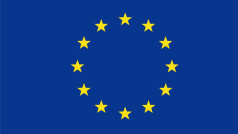“The measures planned by the EuropeanCommission in the field of design and innovation for the circular economy will contribute towards increasing recycling rates for materials such as steel, precious metals or plastics,” said Artemis Hatzi-Hull, EU Commission DG Environment, responsible for waste management, at the press conference of the International Automobile Recycling Congress IARC 2016 in Berlin.
Hatzi-Hull expressed her conviction that the new circular economy package will also produce additional positive effects. Among other things, she referred to the planned measures to improve eco-design, which are aimed at increasing the durability, reparability and recyclability of many products. Moreover, she expects that new advanced technologies will have a positive impact on employment in the recycling sector, specifically mentioning the dismantling and treatment plants, including shredder and post-shredder operations.
The automotive industry has also shown its support for the new circular economy package. At the press conference, Dr Tobias Bahr, Environmental Policy Director at the European Automobile Manufacturers’ Association (ACEA), clearly stated that the automotive industry has already embedded the concept of the circular economy in product development, manufacturing and an array of newly offered services.
Bahr spoke in favour of an integrated approach that embraces the entire life cycle, which is preferable to an isolated consideration of resource-efficient aspects at the end of a product’s useful life. In most cases, the use phase of a vehicle is predominant and accounts for around 80 per cent of its ecological footprint. The use phase has the greatest impact on the amount of carbon emissions a vehicle produces and its consumption of fossil fuel resources. By contrast, the environmental impact at the end of a product’s life cycle only accounts for around one per cent.
An integrated approach is therefore important when it comes to effectively limiting the environmental impact. “The automotive industry shows a great commitment to making its contribution at an early stage, in the development and manufacturing process,” Bahr emphasised. Recycling targets should be balanced versus targets that are set to reduce the bigger environmental footprint of vehicles during use. The end of a vehicle’s life is carefully regulated. Manufacturers are working hard to meet the 85% recyclability and 95% recoverability targets for new type approvals.
The ACEA representative acknowledged that with the EU end-of-life-vehicle directive, authorities have taken an important step in creating a consistent regulatory framework. However, so far the implementation has its shortcomings. ACEA has worked to create a level playing field in the vehicle recycling industry, explained Bahr, including the call for an EU-wide system obliging owners to deregister, together with an obligation to provide proof of the proper disposal of end-of-life vehicles with the corresponding monitoring.
Dr Kay Oppat, Chief Operations Officer (COO) of the Germany-based metal recycling company Scholz, also sees a need for action. There are still too many end-of-life vehicles being exported, the whereabouts of which are unknown, he said at the press conference. The recycling industry is therefore losing out on large amounts of raw materials. For this reason, new approaches are needed to improve the registration of end-of-life vehicles in Europe.
However, in Oppat’s view, the EU end-of-life vehicle directive still does not go far enough. Among other things, he sees it as necessary to create new, clear definitions for the term “end-of-life vehicle”. Furthermore, financial incentives need to be put in place for a take-back system and the introduction of a burden of proof for the exporter, to ensure that the vehicle being exported is really a used one. And the exchange of information between manufacturer, the final owner of the end-of-life vehicle and recyclers needs to be made more transparent.
Finally, Oppat also calls for a practice-based platform of relevant representatives who jointly solve current problems and thereby also generate key impetus for legislation by means of factual changes. Oppat also gave a brief outline of possible topics of discussion, such as the meeting of recycling quotas for electric cars. The recycling of end-of-life vehicles that contain a high percentage of carbon fibres is also one of the future areas of activity.








